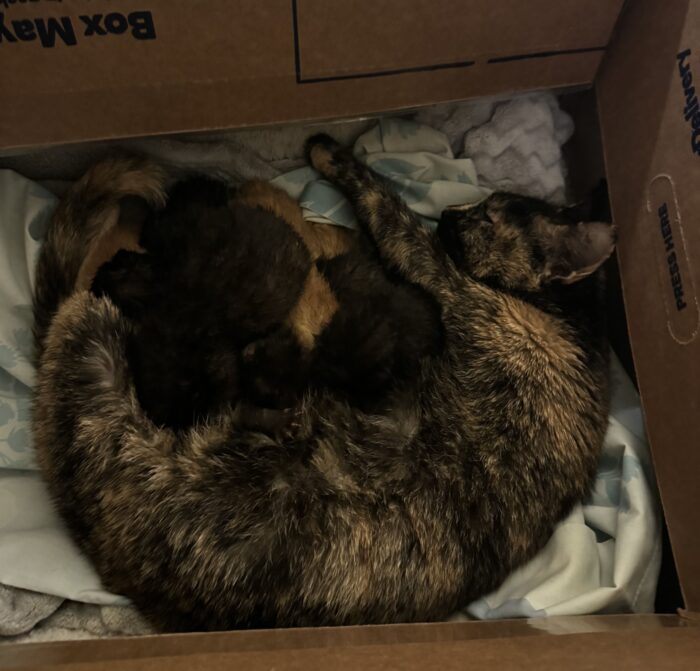A black and tan Carolina dog stands hesitantly in the doorway of his foster parent’s living room, as she throws him treats and waits for him to enter. He won’t even walk past the couch.
It has been over a year since Mortimer and 67 other Carolina dogs were rescued from an illegal breeding and hoarding operation by Animal Care and Control and police. Each dog displayed varying levels of sociability, behavioral issues and physical needs when found in a 700-square-foot Bloomington residence.
Mortimer, or Morty, has been with Casey Green since December, but is still learning to trust her and other humans.
“I’m used to being able to touch fosters and interact with them and play with them. Morty is building from the ground up,” said Green, who’s been fostering with the Bloomington Animal Shelter for over a decade. “Training him for eye contact, and training him to approach humans, or allow himself to be touched, or just change his bedding without freaking out. Everything is new to him.”
This was a similar situation for Green’s other long-term Carolina dog from the same case, Eleven.
“A dog that can’t interact with a human, at all, doesn’t have much of a future for happiness,” said Green.
Animal foster Casey Green and shelter manager Robyn Peffinger discuss the impact of the foster program.
An older woman sits on a wood paneled floor of her home, while a calico cat lays between her legs as her kittens nurse. The woman strokes the cat’s head and gives her affirmations while she completes her motherly duties. This woman is Nola Hartman.
“Here she was, pregnant, out on the streets and luckily some kind soul found her and picked her up, but you know there’s also lots of cats out there who aren’t that lucky,” said Hartman.
Hartman knows this all too well after fostering animals, mostly cats, for over 20 years. Last November, a different mother cat came in with Feline panleukopenia, a disease that cats are typically vaccinated for. The mom cat survived, but all of her kittens passed away.
“I always apologize to them…” said Hartman. “I know that there are more cats in the world than there are homes, but if I’m holding a kitten in my hands, I want it to live and thrive.”

A mother cat and her kittens, who died from Feline panleukopenia. Photo submitted by Nola Hartman.
According to shelter manager Robyn Peffinger, nearly 45% of the animals that go through the Bloomington Animal Shelter end up in foster homes. These homes, at times, are the only thing saving an animal from homelessness or euthanization in extreme cases, like the ones above, or can be an animal’s last stop before they pass.
Shelter manager Robyn Peffinger discusses the importance of the foster program for senior animals.
“To be able to open up your home, and yes you put your life into temporary upheaval, but to do that it’s such a gift that you’re giving,” said Peffinger.
The application to become a foster is changing. By the end of the summer, Peffinger plans to create a simpler process where all applicants have to do is: 1) fill out the online application, 2) attend a brief online orientation and 3) take home an animal.
Even citizens with financial, transportation, and time concerns can sign up to be a foster parent. Peffinger says the shelter can provide food, medications, and other basic necessities to lighten the burden. She also stresses that whatever time potential fosters can provide is enough.
“They’re in kennels here 23 hours a day…” said Peffinger. “The time that you have for them is greater than the time that they’re getting here.”
The foster program is a temporary situation for volunteers, but a life-saving opportunity for the animals who rely on the program to help them transition to their forever homes.

